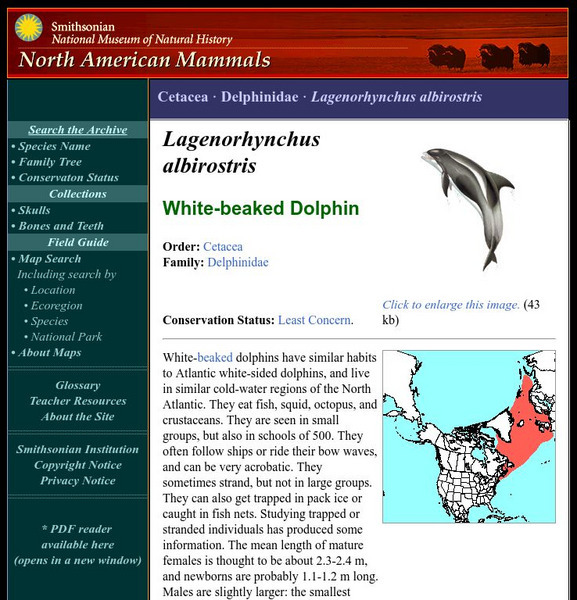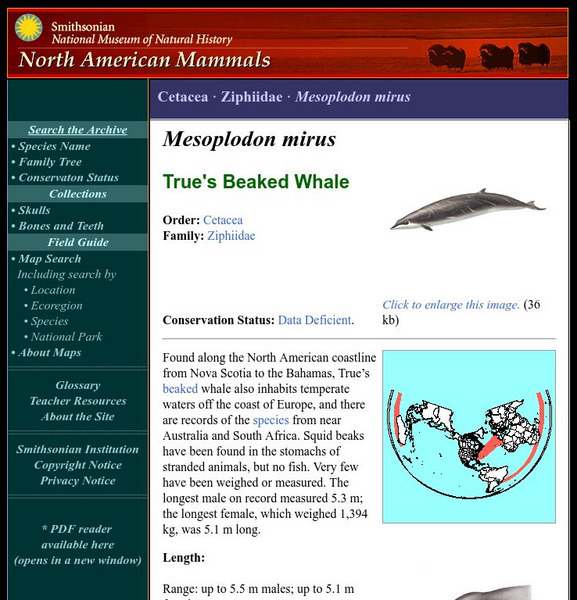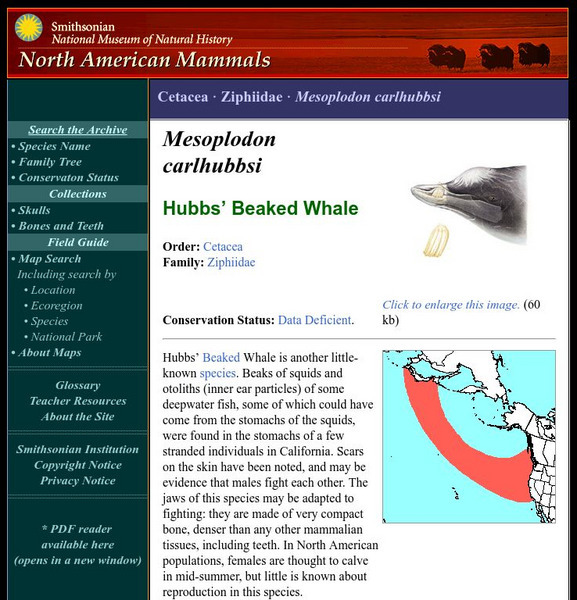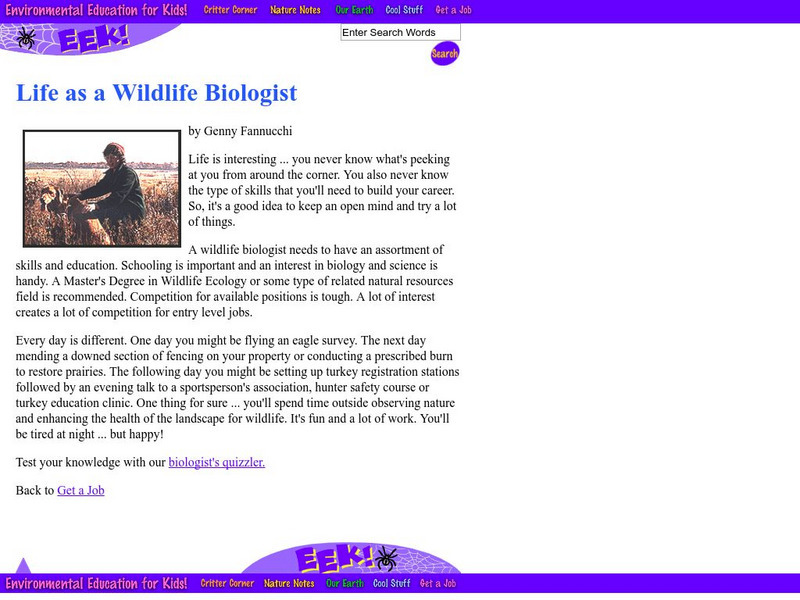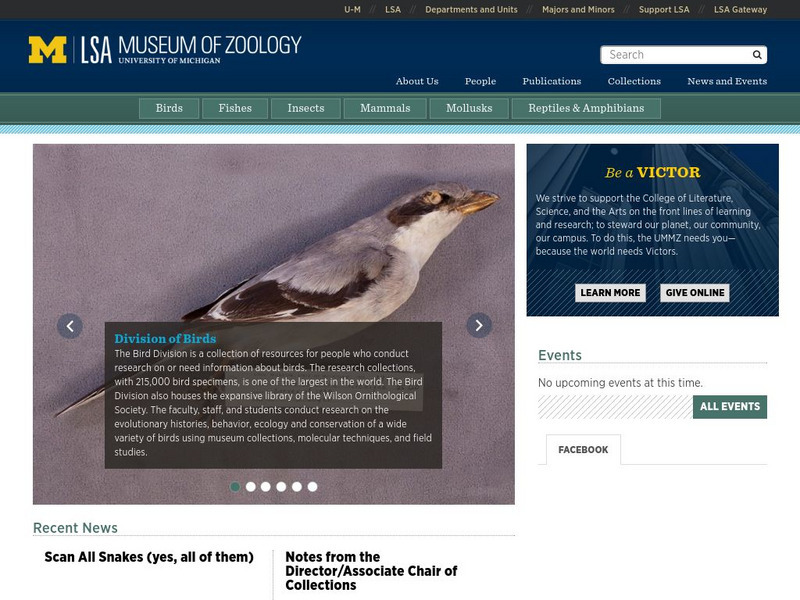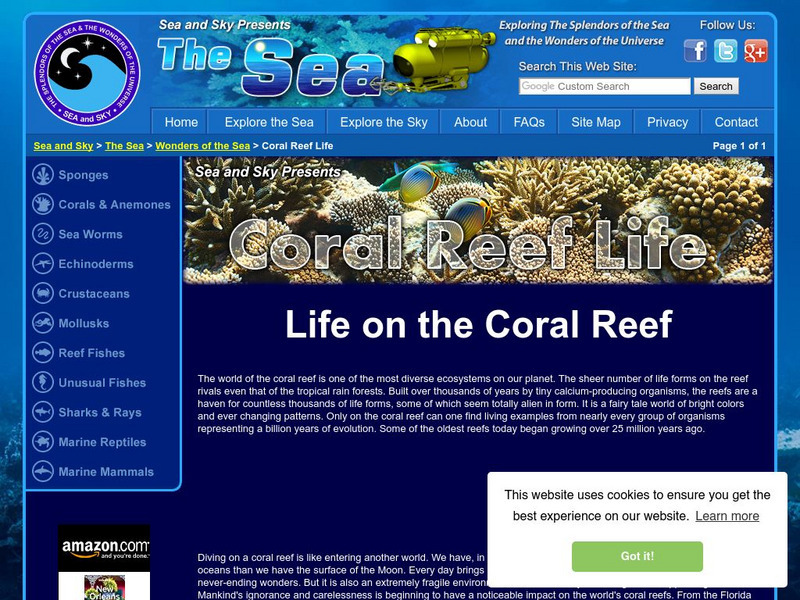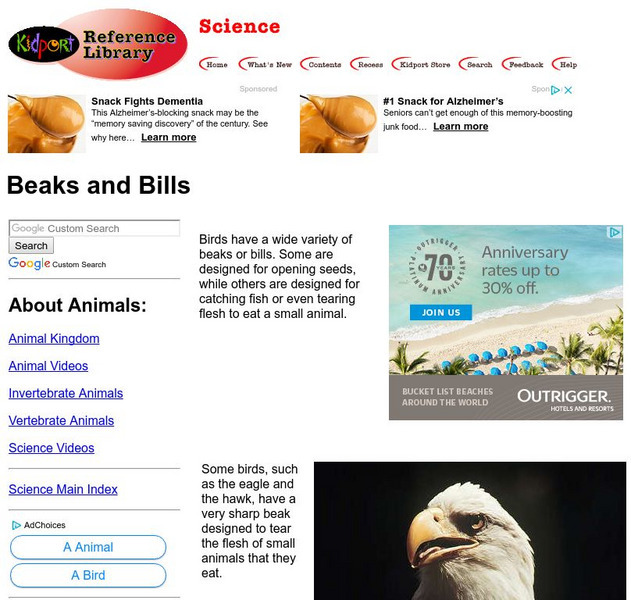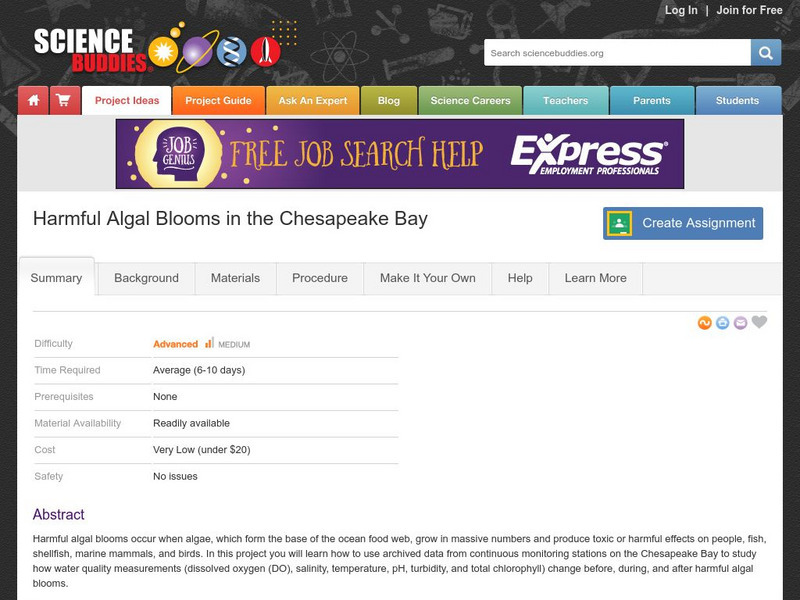Smithsonian Institution
National Museum of Natural History: American Mammals: Northern Right Whale Dolphin
With no dorsal fin, a slender body shape that tapers steadily toward the tail, and small flippers and flukes, the northern right whale dolphin appears to be built for speed. It has been clocked at 34 km per hour and can dive as deep as...
Smithsonian Institution
National Museum of Natural History: American Mammals: White Beaked Dolphin
White-beaked dolphins have similar habits to Atlantic white-sided dolphins and live in similar cold-water regions of the North Atlantic. They eat fish, squid, octopus, and crustaceans. Learn more about the Lagenorhynchus albirostris,...
Smithsonian Institution
National Museum of Natural History: American Mammals: True's Beaked Whale
Found along the North American coastline from Nova Scotia to the Bahamas, True's beaked whale also inhabits temperate waters off the coast of Europe, and there are records of the species from near Australia and South Africa. Squid beaks...
Smithsonian Institution
National Museum of Natural History: American Mammals: Hubbs's Beaked Whale
Hubbs's beaked whale is another little-known species. Beaks of squids and otoliths (inner ear particles) of some deepwater fish, some of which could have come from the stomachs of the squids, were found in the stomachs of a few stranded...
Tramline
Tramline, Inc.: Virtual Ocean Field Trip
In this enchanting site, students will learn basic principles about oceans and will be introduced to an assortment of sea life, both plant and animal. Other interesting ocean links can be found on the teacher resource section of this link.
Utah Education Network
Uen: Science Vocabulary Game
Fourth graders will play a review memory game with Utah's Grade 4 Science Standard V vocabulary words during this lesson plan. Words associated with living things and classifications of living things are included in this lesson plan.
Smithsonian Institution
National Museum of Natural History: Ocean Planet
Detailed website that was a companion to a 1995 traveling exhibit of the Smithsonian. Links to lesson plans and other educational materials are at the bottom of the page. Enter the exhibition to explore the world of the ocean.
Biology Pages
Kimball's Biology Pages: Animal Circulatory Systems
This page has information on different types of animal circulatory systems. Scroll to the bottom of the page to find out about mammals.
University of Southern California
Structure of Matter: Animals
A slide show that demonstrates the development of physical structure in the animal world, moving from sponges through mammals.
Defenders of Wildlife
Defenders of Wildlife: Keep America's Tuna Dolphin Safe
This site not only contains fact sheets on the bottlenose, spinner, and spotted dolphins, but also examines the whole issue of dolphin conservation. You will learn how tuna fishing is hazardous to dolphins and how eating tuna can be...
abcteach
Abcteach: Animals
[Free Registration/Login Required] This link will place at your fingertips all kinds of resources for your science unit pertaining to animals such as birds, bugs, dinosaurs, endangered species, fish, mammals and reptiles.
Environmental Education for Kids
Eek!: Environmental Education for Kids
This site provides illustrations, descriptions, and species of amphibians, birds, fish, insects, invertebrates, mammals, reptiles, and endangered species.
Ducksters
Ducksters: Animals for Kids
Kids learn about animals including birds, reptiles, amphibians, mammals, and fish. Endangered animals for teachers.
Environmental Education for Kids
Eek!: Life as a Wildlife Biologist
This site describes the skills needed for a career in Wildlife Biology. Includes link to a quiz that tests the student's knowledge of Wildlife issues.
University of Florida
Florida Museum of Natural History: Homepage
This site from the Florida Museum of Natural History gives the current events, information about the museum, exhibits and public programs, research and collections, links, etc. to the Florida Museum of Natural History.
University of Michigan
University of Michigan: Museum of Zoology
See the Museum of Zoology where visitors can explore the museum's resources.
Quia
Quia: Animal Facts Scavenger Hunt
At this website you are given ten questions to answer and links to three websites where you can find those answers.
Other
Sea Sky: Reef Life
The coral reef, its composition and inhabitants are explored here in detail. With additional information about the life that inhabits a coral reef.
E-learning for Kids
E Learning for Kids: Science: Caribbean Sea: How Can We Classify Animals?
Welcome to Hideaway Island where five pirates need to find crews for their ships. Join in and learn about animals with backbones.
PBS
Pbs: Secrets of the Ocean Realm
At this site students can read about sea creatures and ocean plant life, and see pictures of each.
Other
Hillfield Strathallan College: Evolution of Mammalian Circulation
An overview of the evolution of modern mamallian circulation. This is a good site since it puts the circulation found in reptiles in perspective. Compares it to systems in fish and mammals.
Kidport
Kidport: Beaks and Bills
Birds have a wide variety of beaks or bills. Some are designed for opening seeds, while others are designed for catching fish or even tearing flesh to eat a small animal. Discover the dynamic uses of beaks and bills.
Yale University
Yale New Haven Teachers Institute: Animal Kingdom
Background information about all of the classes of the animal kingdom, followed by four short lesson plan outlines.
Science Buddies
Science Buddies: Harmful Algal Blooms in the Chesapeake Bay
Harmful algal blooms occur when algae, which form the base of the ocean food web, grow in massive numbers and produce toxic or harmful effects on people, fish, shellfish, marine mammals, and birds. In this project you will learn how to...



